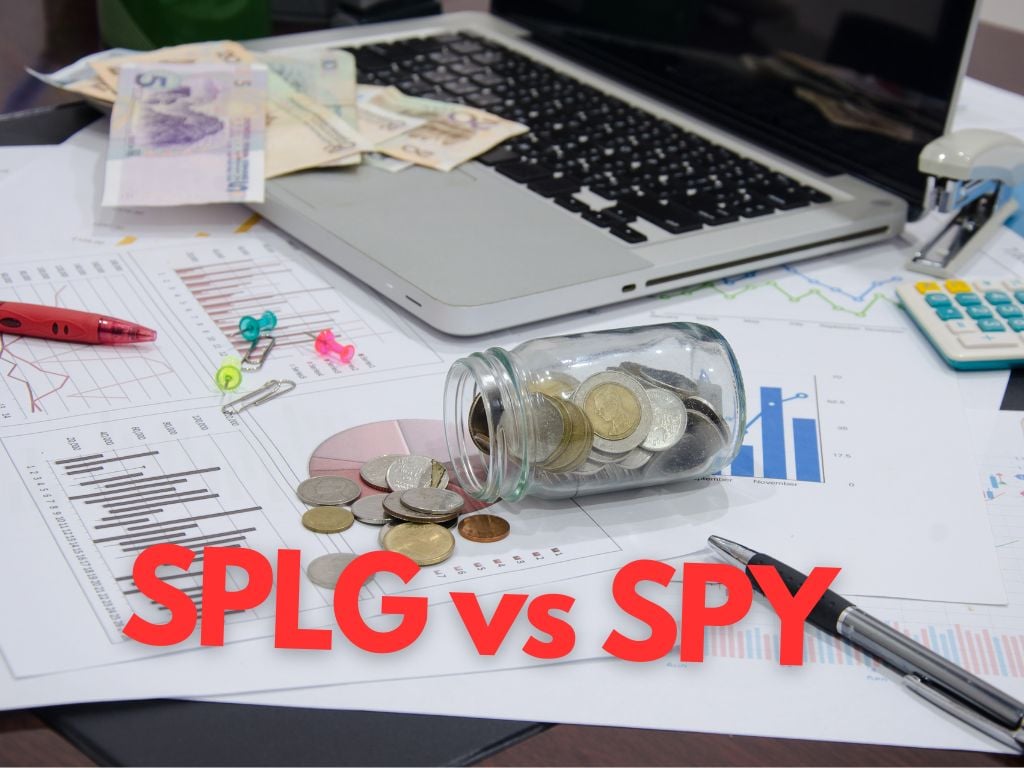In the world of investing, index funds have gained significant popularity among both novice and seasoned investors.
These funds provide a simple and cost-effective way to gain exposure to a wide range of stocks in a particular market index, allowing investors to potentially match the performance of the overall market.
Two such popular index funds in the United States are SPLG and SPY.
In this article, we will address the SPLG vs SPY debate by comparing these funds in terms of their background information, fund details, pros and cons, and factors to consider when choosing between them.

Background Information on SPLG and SPY
Before diving into the details, it’s essential to understand what index funds are and why comparing SPLG and SPY is crucial.
Index funds are investment vehicles that aim to replicate the performance of a specific market index, such as the S&P 500.
By investing in an index fund, individuals can gain exposure to a diverse portfolio of stocks representing a broad market index.
This is in contrast to a mutual fund, which is composed of a basket of equities that are curated together by a fund manager.
Index funds typically have a lower expense ratio because of their passive management.
Both SPLG (State Street Portfolio S&P 500 Index ETF) and SPY (SPDR Portfolio S&P 500 ETF Trust) are designed to track the performance of the S&P 500 index.
While both funds share this common goal, there are key similarities and differences that make them unique investment options.
SPLG vs SPY: Fund Details
SPLG (State Street Portfolio S&P 500 Index ETF)
SPLG, managed by State Street Global Advisors, offers investors exposure to the S&P 500 index. Let’s take a closer look at the key features, performance evaluation, and risk assessment of SPLG:
Key Features
- Expense Ratio: SPLG boasts a low expense ratio of roughly 0.02%, making it an attractive option for cost-conscious investors.
- Asset Allocation: The fund seeks to replicate the performance of the S&P 500 index, which consists of 500 large-cap stocks.
- Minimum Investment Requirements: SPLG allows individual investors to enter the market with a relatively low minimum investment.
Performance Evaluation
To understand how SPLG has performed historically, investors should examine factors such as historical returns, tracking error, and dividend yield.
These metrics provide insights into the fund’s ability to closely replicate the performance of the target index.
Risk Assessment
Volatility measures, diversification benefits, and sector exposure play a significant role when assessing the risk associated with an index fund like SPLG. Investors must understand the potential fluctuations in SPLG’s value and evaluate its overall risk profile.
SPY (SPDR S&P 500 ETF Trust)
SPY, also designed to track the performance of the S&P 500 index, is one of the most recognized and oldest exchange-traded funds (ETFs). Let’s explore the key features, performance evaluation, and risk assessment of SPY:
Key Features
- Expense Ratio: Similar to SPLG, SPY offers a low expense ratio of roughly 0.09%, which is an important consideration for investors aiming to minimize costs.
- Asset Allocation: SPY provides investors with exposure to the S&P 500 index, mirroring the performance of large-cap U.S. stocks.
- Minimum Investment Requirements: SPY has relatively low minimum investment requirements, allowing entry into the market for a wide range of investors.
Performance Evaluation
Analyzing historical returns, tracking error, and dividend yield helps investors gauge the performance of SPY compared to the S&P 500 index.
Consistency in replicating the index’s returns and minimizing tracking error is crucial when evaluating the fund’s performance.
Risk Assessment
Understanding the potential volatility, diversification benefits, and sector exposure of SPY is essential for assessing the fund’s overall risk.
A comprehensive analysis allows investors to make informed decisions in line with their risk tolerance.
Pros and Cons of Investing in SPLG and SPY
When considering these index funds, it’s important to weigh the pros and cons associated with investing in SPLG and SPY.
Pros
- Low Expense Ratio and Fees: Both SPLG and SPY offer low expense ratios, which reduce the drag on investment returns.
- Broad Exposure to S&P 500 Index: Investing in either SPLG or SPY provides investors with exposure to a diverse portfolio of stocks representing the S&P 500 index.
- Liquidity and Ease of Trading: Both funds are exchange-traded, offering investors the ability to buy and sell shares throughout the trading day.
Cons
- Lack of Potential Outperformance: Index funds are designed to match the performance of the underlying index, so they typically do not outperform the market.
- Limited Customization Options: Investors cannot customize the fund’s holdings or exclude specific companies, as index funds aim to replicate the entire index.
- Dependency on Market Conditions: Performance is dependent on the overall market, and during bear markets or downturns, index funds may experience declines.
Factors to Consider When Choosing Between SPLG and SPY
When it comes to selecting between SPLG and SPY, several factors should be taken into account:
Investment Goals and Time Horizon:
Determine whether your investment goals align better with SPLG or SPY in terms of risk appetite and time horizon.
Risk Tolerance:
Assess your ability to tolerate potential market volatility associated with these index funds.
Cost Considerations:
Compare expense ratios and fees between SPLG and SPY to identify the most cost-effective option for your investment objectives.

Personal Preferences:
Consider any specific investment preferences you may have, such as environmental, social, and governance (ESG) considerations.
Asset Allocation
Asset allocation is a crucial part of any investment strategy. Investors should determine what percentage of their portfolio should be allocated to equities vs. fixed income, based on their risk tolerance and long-term goals.
Within the equity portion, investors should also consider how much exposure they want to a particular market index.
For example, investing solely in the S&P 500 index may not be diversified enough for some investors, and they may choose to allocate a smaller percentage of their equity portion to index funds like SPLG or SPY.
Market Conditions
While index funds aim to replicate the performance of the overall market, market conditions can have a significant impact on their returns.
In a bull market, index funds like SPLG and SPY can generate significant returns, but in a bear market or economic downturn, the funds may decline in value.
Therefore, it’s essential to consider the current market conditions before investing in index funds.
Fund Managers
Investors should also consider the fund managers behind index funds like SPLG and SPY. Fund managers play a critical role in overseeing the funds’ performance, fund expenses, and adherence to the fund’s investment objective. In this case, both funds have the same advisor, State Street Global Advisors.
Some investors may prefer to invest only in funds managed by well-established fund managers with a proven track record of success.
Frequently Asked Questions
What is the difference between SPLG and SPY?
SPLG and SPY are both index funds aiming to track the performance of the S&P 500 index. However, they differ in expense ratios, and certain operational details.
Which fund is better for long-term investors?
The choice between SPLG and SPY for long-term investing depends on an individual’s specific goals, risk tolerance, and preferences. It is prudent to conduct thorough research and seek professional advice before making the decision.
How do the expense ratios of SPLG and SPY compare?
Both SPLG and SPY have low expense ratios when compared to actively managed funds. SPLG’s is notably lower than SPY’s, however. Conducting a thorough analysis of expense ratios is encouraged to select the most cost-effective option.
Some brokerage platforms allow investors to buy fractional shares of SPLG and SPY, enabling more flexibility in investment amounts.
Are there any tax implications of investing in these funds?
Like any investment, SPLG and SPY can have tax implications. Investors should consider consulting with a tax advisor to understand the potential tax consequences.
Conclusion
When comparing SPLG and SPY, investors should carefully analyze the fund details, consider the pros and cons, and evaluate various factors such as investment goals, risk tolerance, and cost considerations.
It is essential to conduct thorough research, carefully analyze historical performance, and seek professional advice before making investment decisions.
By doing so, investors can make informed choices that align with their financial objectives and risk appetite.




 Tags:
Tags:










